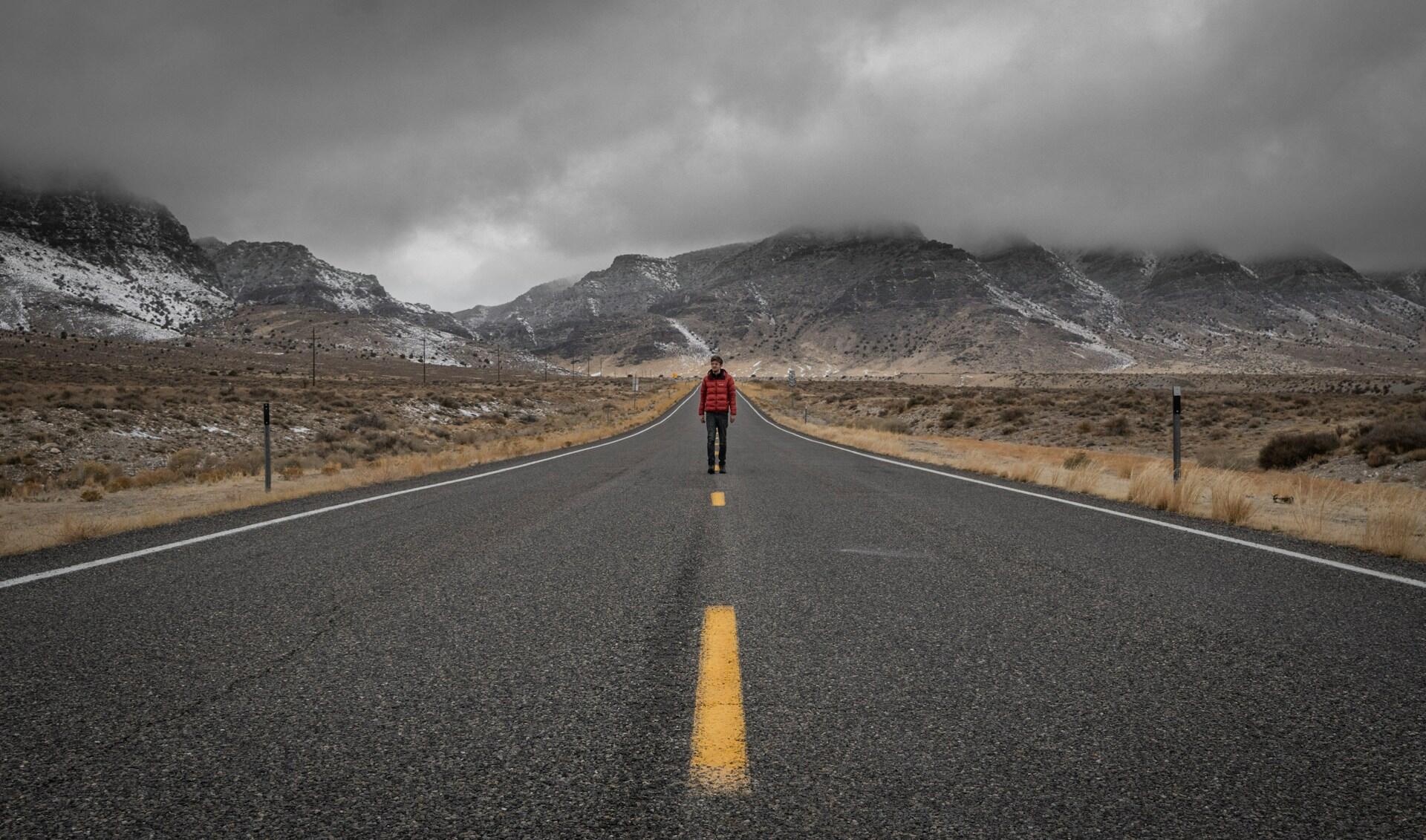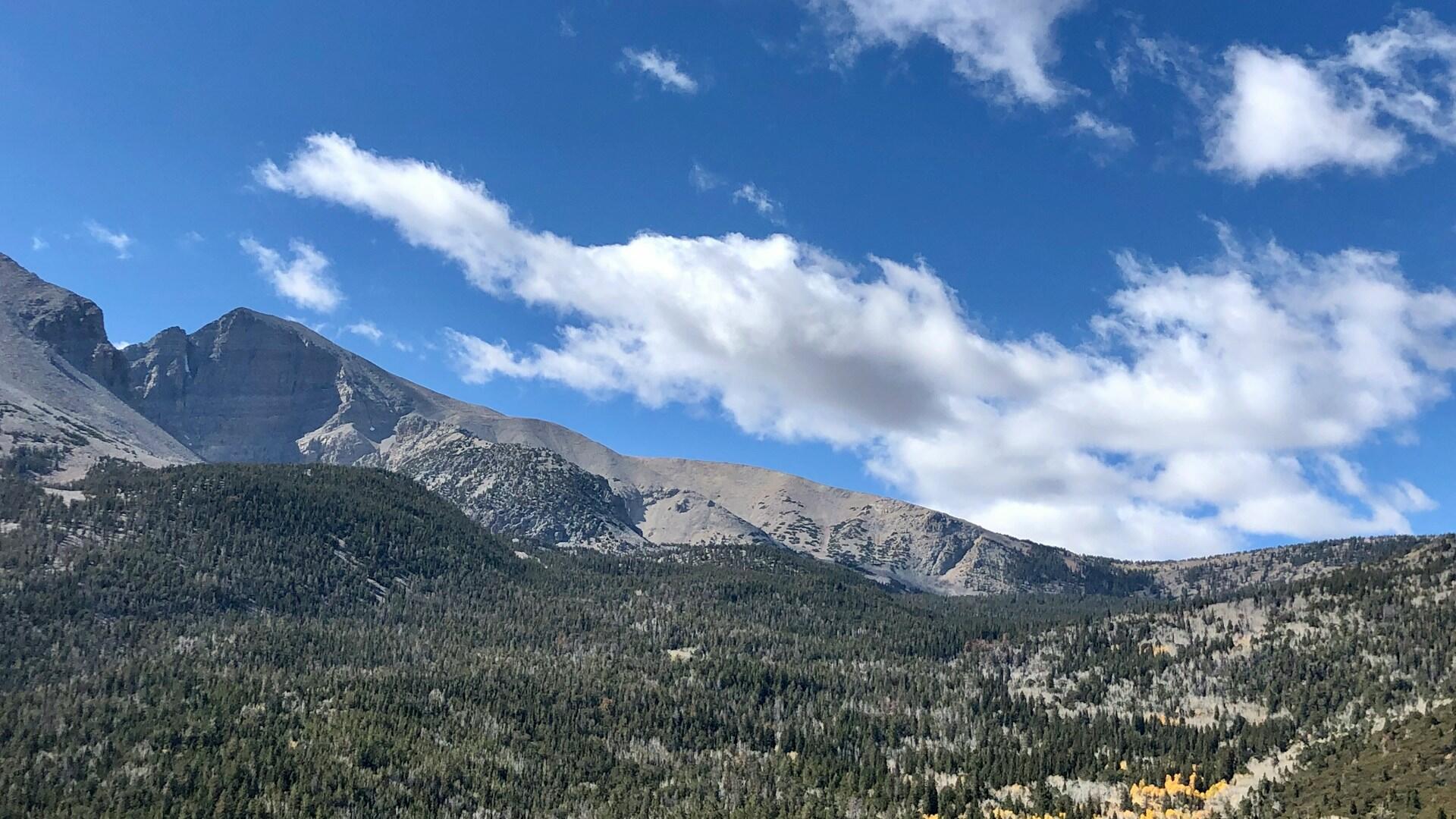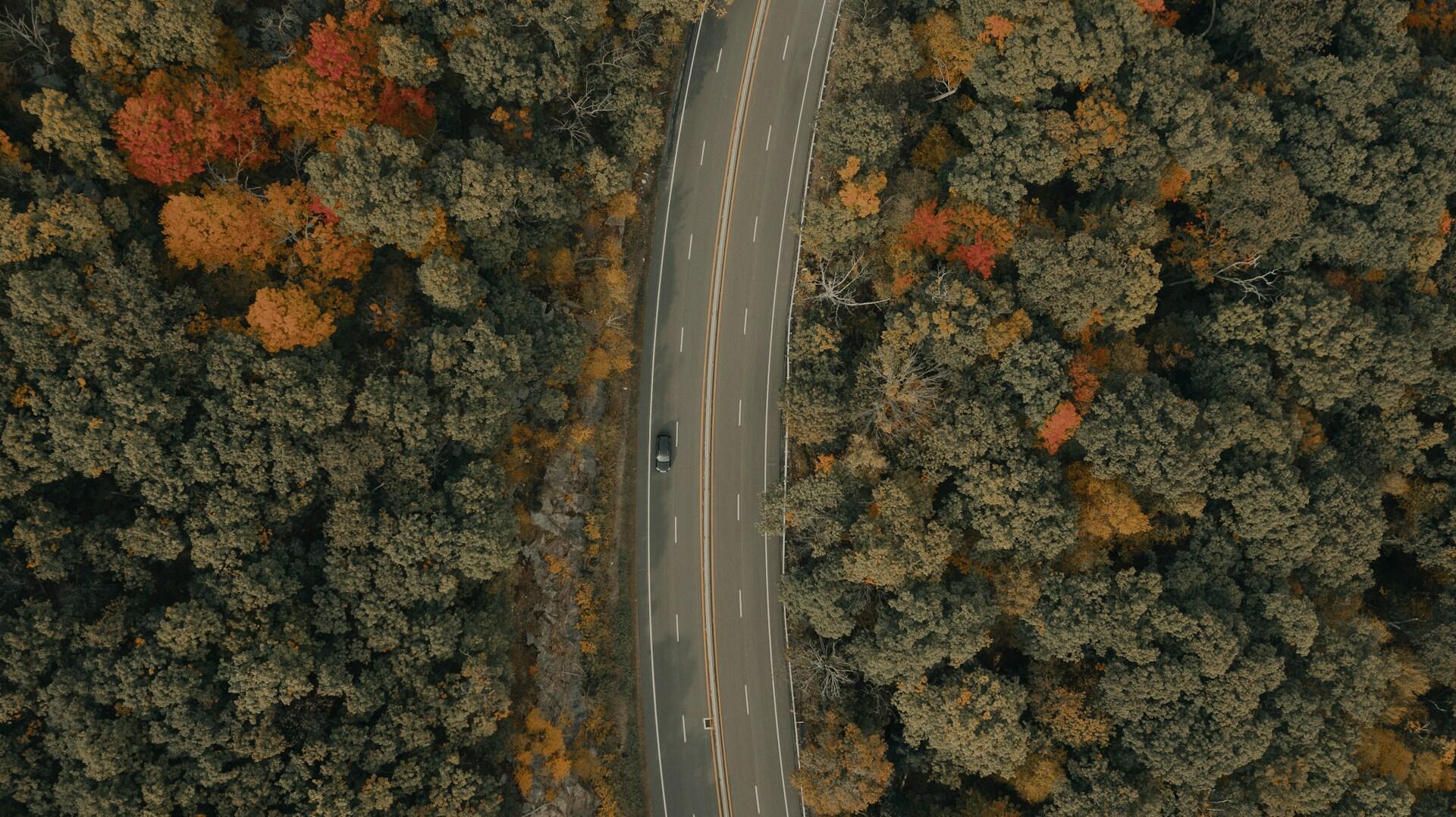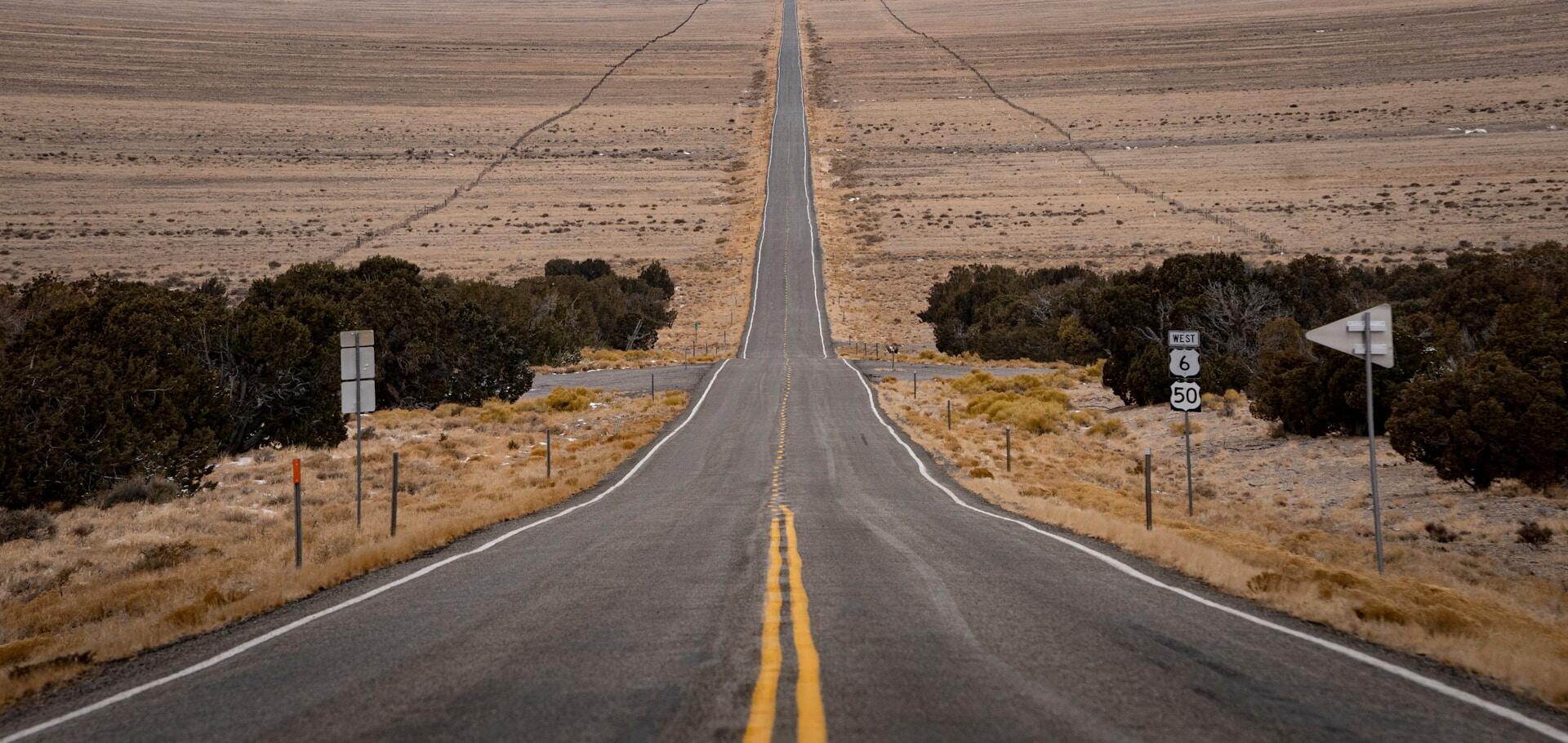U.S. Route 50 cuts through the center of Nevada, a long stretch of highway often called the Loneliest Road in America. It's quiet out there! The road runs straight for miles, bordered by empty desert, dry mountains and old towns that time seems to have left behind. In 1986, Life magazine called it a place with nothing worth stopping for. That line stuck, but over the years, people began to see it differently. Not everyone wants crowds or landmarks when away on vacation! Some come here for the stillness and the kind of silence you don’t find in many places anymore. If that sounds like something you're ready for, this article will give you a step by step planning guide!
We warn all motorists not to drive there unless they're confident of their survival skills.
American Automobile Association (AAA), as quoted in Life magazine, July 1986

Route Overview: Distance and Duration
The Nevada section of Route 50 runs about 409 miles from Fernley to Baker, near the Utah line.
You could drive it in 8 hours, but we do not recommend it. Most travelers give it 3 to 5 days. Not because it demands it, but because it deserves it! The road rolls through six mountain ranges and wide desert basins. So much for you to explore! Let's get started.
Why Is Highway 50 the Loneliest Road in America?
Highway 50 got its name from a 1986 article in Life magazine that described the Nevada stretch as completely empty. The article warned readers not to travel it unless they were prepared to be alone for long distances. The name stuck because it was true... Between Fallon and the Utah border there are few towns and fewer signs of modern life. Gas stations can be more than 100 miles apart! To top it off, cell service drops out often. You can drive for an hour and not see another car. There are no theme parks, shopping malls or billboards along the route. Just open land and long miles!

Most highways in the country were developed with stops in mind. However, route 50 in Nevada was not. It remains close to how it has always been. The road stretches across wide basins and over quiet mountains. Some people see it as empty, but others see it as calm and soothing. If you're looking for peace, you know where to find it!
Nevada embraced the “Loneliest Road in America” nickname by creating a survival guide and passport, which travelers can get stamped in towns along the route!
If you're planning a road trip, the Great River Road would be a great addition to your plan!
What Makes This Route So Famous
When Life magazine called it “totally empty” and warned motorists not to attempt it without survival skills, they gave it a kind of twisted fame. What they saw as dull, others saw as a challenge. The article said:
It’s totally empty. There are no points of interest. We don’t recommend it.
Life Magazine, July 1986
Nevada ran with it and made it a campaign. Towns along the way even offered “survival guides” and passport stamps. People came to see what could be found in a place so often overlooked and many came back delighted! This was a great move to boost tourism in the area.

Key Highlights In Nevada
This stretch of highway has no amusement parks, no shopping districts and no polished attractions. They call it the Loneliest Road, but that doesn’t mean there’s nothing in Nevada. There are very few towns, but they are definitely worth a visit. Even if just for gas, food or a quick look around!
Fallon
Fallon is a working town built on farming and military roots. The Stillwater National Wildlife Refuge draws bird watchers and photographers. It is also the last place to fill your tank before the road begins! The Main Street still feels like it belongs to the locals. You will find authentic stores and quiet diners. If you need last-minute supplies before hitting the road, this is the place to get them. Here is a guide on visiting Fallon on YouTube!
Eureka
Eureka calls itself the friendliest town on the loneliest road and it’s easy to see why. The old opera house is still open to the public and many of the storefronts are still made of their original wood. The local museum has a ton to discover and the volunteers are happy to share stories if you’ve got a minute to listen. You can also walk through the old jail if you have the time. Finally, there’s a newspaper office that’s somehow still printing after more than 150 years. People wave when you drive by, even if they don’t know you. It’s a small town that still feels like one!
Are you curious to read on the Pacific Coast Highway for your next trip?
Ely
Ely is the largest town along the route, but still far from crowded. Here, you can ride a train around the mountains or visit Ely's historic downtown. The walls of downtown carry hand-painted murals that tell the story of miners and cowboys. There is also a museum worth your time if you're a history fan. If not, take a short drive out of town and find the old mines and trailheads that vanish into the hills. Thinking of visiting Ely? Here's a fun YouTube video!
Great Basin National Park
Near the edge of the state, you reach Great Basin National Park. Most drivers do not expect alpine lakes and ancient trees after so much dry land. However, here, you will find both! Wheeler Peak watches over everything and the bristlecone pines hold ground even after 4,000 years. Campgrounds are scattered across the park and most remain uncrowded even in peak season. Bring a jacket, even in the summer because the nights can be cold! If you start your day early, you'll get a magnificent sunrise overlooking the mountains.

Driving Tips and What to Know Before You Go
Before setting out on Route 50 through Nevada, it is important to fully understand what this road demands. Cell service is limited across large sections and there are long stretches with no gas stations, food or help. This is a road trip that requires preparation, so start with the basics! Fill your tank in Fallon, top it off again in Austin or Eureka. Always keep water in the car, not just a bottle, but a few gallons! Make sure to bring the appropriate attire for the season.

Think about also bringing a spare tire, a jack that works and basic tools. You cannot count on roadside assistance. Carry a paper map in case your GPS cuts out, let someone know where you are going and when you plan to reach your next stop. Even better, check in from each town with a quick message or call! Make sure to watch the road at dawn and dusk. Wildlife, like mule deer and pronghorn sometimes step onto the road. Some drivers miss them because they are looking at the horizon instead of what is ahead. Stay cautious when visiting their home!
Highway 50 in Nevada passes through six mountain ranges, offering some of the darkest night skies in the country. Perfect for stargazing!
Have you ever been on Route 66?
Superprof: Learn Along the Way
If this road makes you curious, Superprof can help. It connects you with tutors who teach various subjects. Want to learn how to drive or learn how to read the stars for this roadtrip? Want to take better photographs or understand the geology behind those peaks? You can study when preparing for your trip! The road may feel lonely, but with Superprof, your learning does not have to be!
Planning Your Next Road Trip
U.S. Route 50 across Nevada is a once in a lifetime experience that will be different from your usual road trip. Would you trade speed for stillness? This road is not for everyone. However, if it is for you, then you already know why! Do not forget to travel safely. Do you need help planning the best road trip ever?
Résumer avec l'IA :















